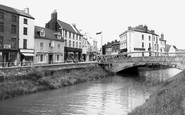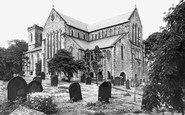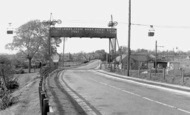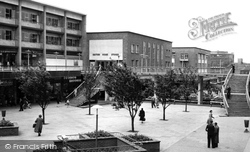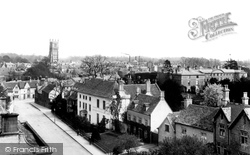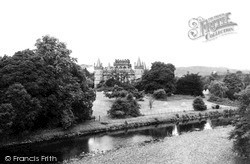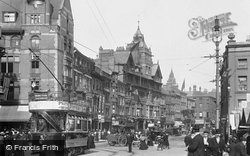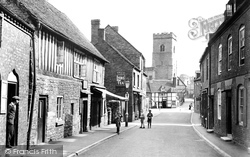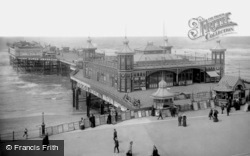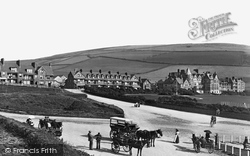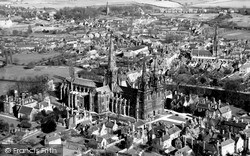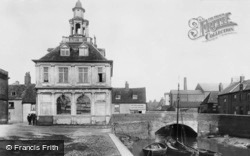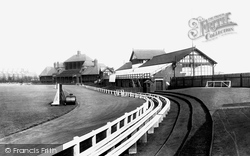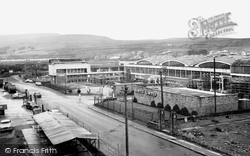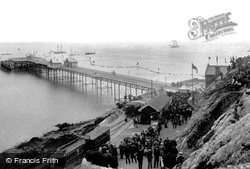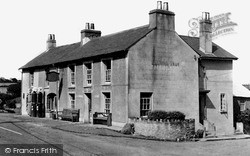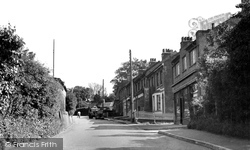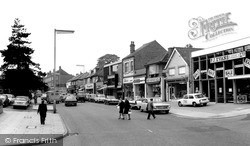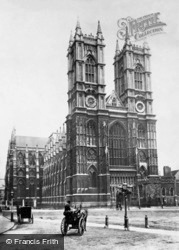Places
1 places found.
Those places high-lighted have photos. All locations may have maps, books and memories.
Photos
Sorry, no photos were found that related to your search.
Maps
22 maps found.
Books
1 books found. Showing results 193 to 1.
Memories
421 memories found. Showing results 81 to 90.
Schooldays At Bexley Tech In Townley Rd, 1961 66,
I was at Hall Place for a year in 1961, originally at Brook Street girls school, Northumberland Heath. I loved it there, was there recently remembering happy days. At the main school in Townley Rd I ...Read more
A memory of Bexleyheath by
I Was There Ron Jackson
In 1949 the Royal Links which had hosted Royals and the glitterati of the day was the first to fall to the contagious bout of fires which mysteriously began to sweep the area. Imagine that wonderful central staircase (with no ...Read more
A memory of Cromer by
High Bridge
When I was very young, just before 1950, I can remember High Bridge was like this without the footbridge beside it. Without so much traffic it was safe to walk over the main bridge. Then the river was tidal and had banks of mud on either ...Read more
A memory of Spalding in 1955 by
Almondsbury South Gloucester
Where do I start ? Living in Monmouth House on the top of Almondsbury Hill. going to Almondsbury village school sitting next to Tony Evans, head of the Patchway gang & a brilliant football goalkeeper. Gaffer ...Read more
A memory of Almondsbury in 1940 by
2nd World War Years 1942 46
I lived Bents Green from about 1934 till 1963 apart from about 8 years, which were taken up by 6 years in the Merchant Navy, 2 National Service. I went to Ecclesall Church School for my school days, a Reverend Turner ...Read more
A memory of Sheffield by
What A Scare
It was a cold and wet evening when I had arrived in Peterborough, and having little money on me certainly not enough to pay for some hotel. I had been thumbing lifts from various towns, but as it was teeming it down with rain, I did not ...Read more
A memory of Eye in 1971 by
My Mother Was Evacuated To Buckinghamshire Twice!
Britain declared war on Germany in September 1939, and this country's involvement in the Second World War began. German air-raids and gas attacks were expected imminently, and many children ...Read more
A memory of Princes Risborough in 1940 by
Growing Up In Penge (1947 Onwards)
I have said that my early life began in Penge in 1947, but that is only as far back as I can remember. Although I was still only two then, I do have a very good memory. I can remember while I was in a pram outside the ...Read more
A memory of Penge in 1947 by
The Caddick Family
1946 was the year that our family life in Nancledra began. What a relief it must have been to our parents, Peggy and Arthur Caddick to move into Windswept Cottage. The war years in London were over and they both felt a huge sense ...Read more
A memory of Nancledra by
The Ghost On Station Road
I lived at 59 Station Road, Royston. My parents moved there in the very early 1960's and I was born in 1969 and my brother David in 1972. It was a semi, with what seemed to be a garden that went on forever. I was ...Read more
A memory of Royston by
Captions
469 captions found. Showing results 193 to 216.
Construction began in 1951, and took about 5 years. The shops were built in two tiers - it is said that the architect, Donald Gibson, was inspired by the magnificent medieval Rows at Chester.
Inadequate foundations meant that the tower began to show signs of instability even before it was completed, and it had to be shored up with spur buttresses.
Work began in 1743 and ended in 1770. The old castle was demolished in 1773.
The electric trams which began service in 1901 quickly proved popular with the citizens of Nottingham.
Thanks to a railway station providing train services to London, Brockenhurst began to expand during the second half of the 19th century.
In the 18th century it passed to a Southampton builder who was killed by falling tracery as he began to demolish the site.
This idea was later copied by Baron de Coubertin, who began the international Olympic movement.
Work began on Blackpool's second pier in 1867 and took less than a year to complete. Promoted as the 'pier for the masses', it was hugely popular and offered a variety of entertainments.
The first Knott End ferry began as a family business shortly after work on Fleetwood started, but in 1894, was taken over by the municipal council.
It was only in the late Victorian era when builders began to throw up lines of villas overlooking the sea that Woolacombe's attractions were discovered.
Kenilworth began its transformation from bleak fortress to luxurious palace in the 1360s when it became the property of John of Gaunt, Duke of Lancaster.
Jax, a cheerful low-price dress shop for younger customers, replaced the more staid Co-op; Millett's, which began by selling army surplus goods, branched into camping equipment and tough outdoor clothes
Work on Lichfield Cathedral began in the late 12th century, and took about 150 years to complete, though additional work was undertaken during the 15th century.
It began life as the Merchants' Exchange, with an open-arched arcade on the ground floor. This was blocked in 1718 when the building was converted for use as a Customs House.
Test cricket began at?Headingley in 1899.
Despite a campaign to preserve it, the last phase of its demolition began in 2001.
The Mumbles railway began as a tramroad authorised by an Act of Parliament in 1804; it carried limestone and coal until one of the original shareholders, Benjamin French, used a horse-drawn wagon to carry
Despite a campaign to preserve it, the last phase of its demolition began in 2001.
This hotel was probably first built at the end of the 18th century, when the Turnpike Trusts began to improve the county's roads.
Along with its neighbouring villages of Betteshanger and Tilmanstone, this settlement was a centre of the short-lived Kent coal industry, which began when coal was discovered when borings for a proposed
Work on this magnificent church began in 1928 and the east end was completed in 1933. However, it was the summer of 1993 before the church was finally completed, dedicated and opened.
Work on the present structure began in the late 12th century, and took around 150 years to complete, though additional work was undertaken during the 15th century.
It retained its predominantly rural character until industry began to develop in the 17th and 18th centuries.
Henry II began the reshaping of Edward the Confessor's old church. Restyling continued until well into the 16th century.
Places (1)
Photos (0)
Memories (421)
Books (1)
Maps (22)




